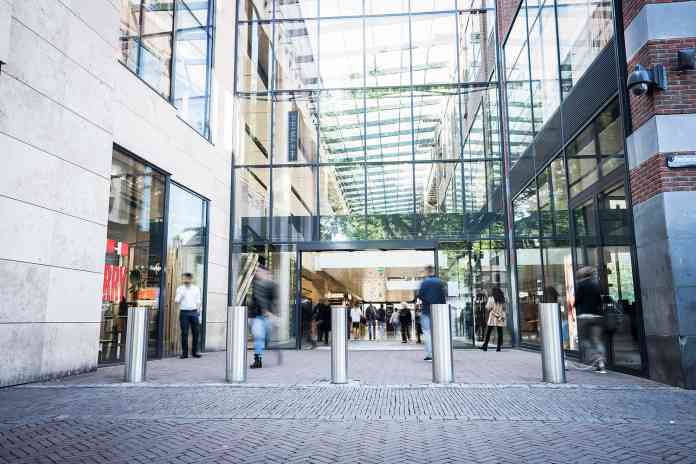
Security's role in the future of our high streets
Iain Moran explains for Counter Terror Business how the coronavirus pandemic has changed the future of the high street
With the Housing, Communities and Local Government Committee informed at a January meeting that the lockdown-induced shift towards online retail will likely be permanent, the high street must move its emphasis away from retail and instead become more focused on alternative avenues of use and revenue generation such as leisure and experience-focused activities with the help of new pedestrianised zones.
The pandemic has undoubtedly accelerated changes that were already happening in consumer behaviour. This has presented an exciting opportunity to have another look at our urban landscapes and consider how they might be transformed to better serve the needs and wants of the public.
Last summer, pedestrianisation zones were implemented extensively across the UK and proved to be a great idea, creating new multifunctional spaces for people to gather and socialise. These spaces can be used to provide a much-needed boost to hospitality businesses, or host fun community events, which will be critical when it comes to drawing people back to the high street as things start to return to normal.
The role of physical security in protecting the high street
When creating these new spaces, choosing the right physical security measures, such as bollards and impact-tested street furniture, will be crucial to ensure the public can use and enjoy them with confidence. While this may seem obvious, according to our recent paper, The Future of Urban Design, many architects, it became apparent that specifiers and urban planners feel that not enough is invested in security for the projects that they are working on.
Research revealed that 60 per cent of urban design professionals have concerns about the level of investment in security measures, while 47 per cent feel that their nearest city isn’t safe.
When asked about the barriers to appropriate implementation, the majority (67 per cent) cited insufficient funding, 55 per cent identified a reluctance from local authorities to invest, and 32 per cent had experienced a local unwillingness to have the look of a space spoiled by ‘obtrusive security measures’.
Exploring the potential solutions to these barriers, 53 per cent of those surveyed suggested working in partnership with local authorities and suppliers right from the beginning of a project to determine the most appropriate security measures, while 36 per cent were keen to make use of impact-tested street furniture to counteract any aesthetic concerns.
Returning to normality and seeing our cities and towns bustling with life again once the pandemic comes to an end would be a welcome sight. So, how do we create new safe, public spaces to ensure that a bright future awaits our high streets?
Creating a proportionate security design:
The requirement to facilitate social distancing and the additional pavement space required by hospitality venues to match pre-Covid capacity has resulted in a shift of use in the public realm.
Whenever an area goes through a period of adjustment or a change of use, security measures should be reviewed. The vulnerabilities previously identified to secure our traditional high street set-up might have shifted to present a different set of vulnerabilities.
These new or altered vulnerabilities need to be re-assessed by a security professional who can produce a revised, proportionate security design. Different factors are taken into consideration when producing this type of report:
• Aesthetics:
There are buildings and areas which may call for a strong, physical presence of security measures to deter security incidents. The public realm is not one of these spaces. Varying approaches to aesthetics can be considered. Security measures can be integrated into street furniture or even lettering and artwork to soften the visual impact of security. Measures can also be fitted with aesthetic sleeves in varying designs to include heritage colours or finishes if being placed within a historic town centre.
The impact of security measures can also be lessened if areas within a city or town centre work together on delivering a holistic security scheme. Looking at an area in its totality allows for clever placement of measures to secure key zones. If areas are dissected and land ownership prevents these areas from working together to achieve the end goal, more measures can end up being put into place unnecessarily. The key here is to work with a qualified security consultant and a physical security manufacturer from as early in the process as possible to achieve the best result.
• Stakeholders:
Within the public realm, there are many stakeholders to consider - local authorities, Counter Terror Security Advisors, emergency services, power and utility providers, councillors, and retail consortiums to name just a few. All these groups have different requirements from their section of the public realm.
Each stakeholder group must be consulted to understand the implications of any new or altered security scheme. With security measures having a lifespan of up to 15 years if maintained, the investment in time at the start of the project to ensure that measures meet all requirements and consider any access nuances is time well-spent.
This consultation and collaborative approach could also result in a more successful scheme with all groups being bought into security measures from the very start. This could also result in a more effective operating methodology for security measures.
• Access Requirements:
Taking the time to identify who is using the public realm is important. How many delivery vehicles are moving in and out of city/town centres to sustain the supply chain of shops and hospitality venues.
Does any existing equipment have maintenance measures in place, if so - how often are maintenance contractors needing access to the area? Are there annual events taking place within the space which sees an annual or seasonal increase in visitors? Do hospitality venues have pavement licenses within the area being assessed?
All these questions build up a picture of the types of vehicles accessing an area, how frequently and aims to capture the ‘one-off’ or ‘annual’ visits too. The result of this is to understand the type of security measures which can be implemented.
Are there complete zones which can be secured with fixed security measures so completely pedestrianise and protect an area? Or do demands on the supply and delivery chain within the area prevent this from being possible - do measures in fact have to be automated. If automation is required, the map laying out the types of user and access requirements can assist in building an operational methodology for the area or for individual zones to begin to shape a holistic security plan.
• Proportionate Security:
When considering the types of threat that you are protecting an area from, it is vital that the assessment is proportionate. If an Armageddon approach is taken, measures will be unrealistic, hugely expensive, and will simply not be used.
Proportionate security measures look to protect against likely threats. Within the UK, this would be protecting crowds of people and busy streets against vehicle ramming and VBIED (vehicle-borne improvised explosive device) attacks. While the global terror threat in the UK remains ‘substantial’, these forms of attack, similar to those seen on Westminster Bridge and Borough Market remain a real threat to our society.
With this in mind, a possibly unrealistic response would be to exclude all types of vehicles from town and city centres completely. While this would certainly create a safer space for pedestrians, this might not be practical to underpin the day-to-day running of businesses and town centre economies. A more proportionate scheme would have to be implemented to accommodate users who still required vehicular access.
Working alongside key stakeholders, security equipment manufacturers can provide proportionate measures to create successful and aesthetically pleasing security schemes to encourage people back to our high streets and make them the centre of our community once more.
Iain Moran is ATG Access’s Sales & Marketing Director. Iain has contributed this article on behalf of the Perimeter Security Suppliers Association.












